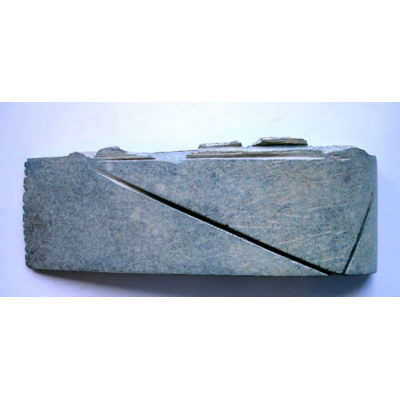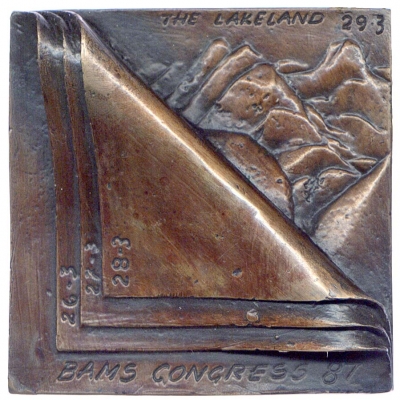Cathie Pilkington (b. 1968) was educated at the Royal College of Art and shows regularly at Marlborough Fine Art in London. She is best known for her figurative sculptures, which balance an open-handed, sometimes sentimental appeal with a more grotesque and uncanny presence. Much of this work trades on the psychological intimacy of commonplace objects such as toys, dolls and ornaments, as well as stock cultural figures such as Punch and Little Red Riding Hood. Her sculptural method is to take these over-familiar things and transform them through dexterously modelled alterations into enigmatic and disturbingly adult objects. This perturbation unmoors the source material from its safe housing in the collective unconscious, and grants it a license to roam freely and uncomfortably across new terrain. Pilkington’s new medal for BAMS, Jumping Jack, is emblematic of her approach in its treatment of a familiar childhood character. A jumping jack is an ancient toy, made from jointed card, wood or bone, which features a figure who can be made to perform a painfully wide-legged leap by tugging on a string that dangles from his median line. Like many of the sources that Pilkington draws from, Jumping Jack is now probably best known at one or two removes from his original form, via nursery rhymes and popular music. Nevertheless, the initial image that it conjures up is of play, childhood, and games of dare: ‘Jack be nimble, Jack be quick, Jack jump over the candlestick’. However, this medal differs from the majority of contemporary art medals in being mounted on military ribbon, and struck rather than cast. Both of these elements suggest a considerably more grown-up context: the board room, the parade ground, and the New Year’s Honours List. Is Citizen Jack having his string tugged? The medal is available in two versions: there are six hand-painted medals and the rest of the edition is patinated. This difference, between the painstakingly hand-made and the crafted, touches on another important theme in Pilkington’s work, namely the quotation and subversion of ideas of art and craft, undermining the popular perception of craft’s inferiority relative to art. This is the subject of an article by Benedict Carpenter in The Medal, 60 (Spring 2012). Of the medal, Pilkington writes: ‘One of the things that attracted me most to the BAMS commission is the ambiguous objecthood of the contemporary art medal. Released from its formal, commemorative function, the format of the medal exists in an in-between land of objects, somewhere in between Art thinking and Craft making. A small hand-held object with no function and an endless supply of rich history and associations. The Jumping Jack medal was originally produced by playfully pressing some miniature doll parts into clay and pouring plaster into the impression. A simple mode of production, these models were subsequently scanned, reduced in scale and struck from a steel-cut die: the handcrafted ready-made meets technology. It is struck in metal, painted and attached to a colourful military ribbon with an Albert Swivel clip that allows it to spin, producing an animated image reminiscent of early optical toys. The flat surface disappears as it spins and becomes a three-dimensional doll again. Jumping Jack is a toy, a keepsake, and a trifle, something to fiddle with while thinking about something else. Whilst the hand-painted version draws on the history of miniaturist painting and enamelling, the patinated version is more like a spinning coin. Touching lightly on heavy topics of life, death, birth and then reverting to play, fun, fiddle.’

Jumping Jack
Jumping Jack
By: Cathie Pilkington, 2011
Medium: struck and painted bronze and ribbon
Size: 69 x 50mm
Cast by: Struck by Thomas Fattorini
Issue: The Medal, no 60 (Spring 2012)
Edition: 6




